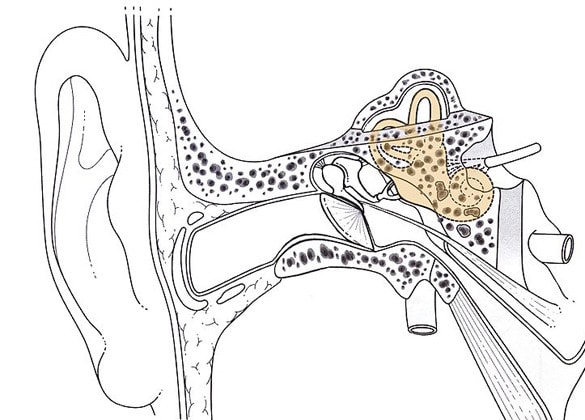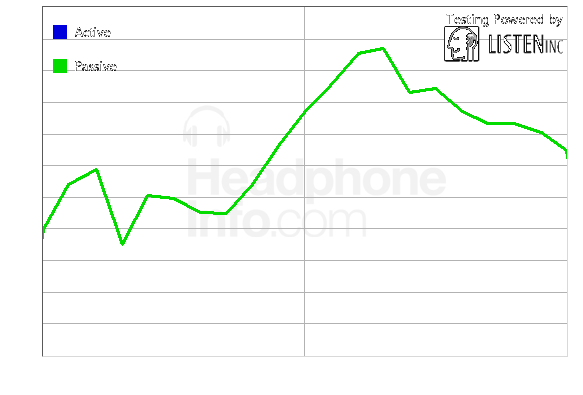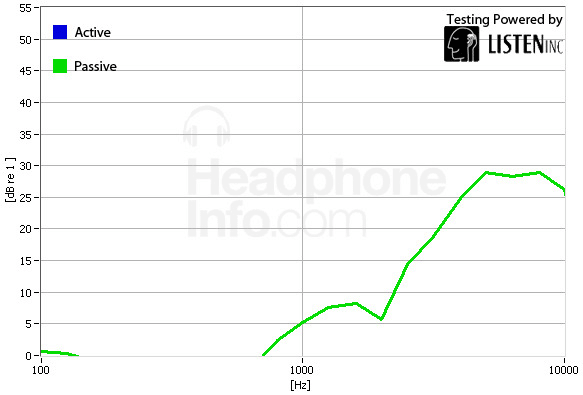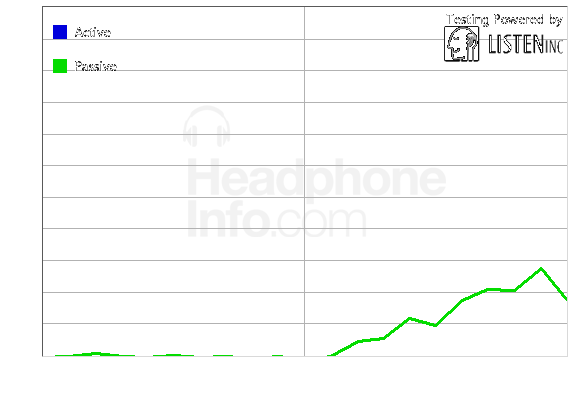Noise-Induced Hearing Loss and You
Our guide to enjoying headphones while preventing Noise-Induced Hearing Loss. A must-read for Headphone consumers.
Products are chosen independently by our editors. Purchases made through our links may earn us a commission.
Do you ever have to turn your music up just to hear it over the sound of the outside world? Ever go to a concert and have a ringing in your ears afterwards (tinnitus)? Notice that you've had to turn your music up more and more over time just to hear it? If you've said yes to any of the above, you could be affected by a pesky condition called Noise-Induced Hearing Loss.

Believe it or not, it's very easy to damage your hearing without even knowing it. We here at HeadPhoneInfo.com would like to make sure our readers get the most out of their headphones, but in order to do that, we also have to take time out to make sure that there's a little public health awareness regarding those shiny new cans you may have bought, or are considering buying.
How ears work:
Pictured above is a diagram of the anatomy of a typical human inner ear. Though it may look a little daunting, we'll make it a bit easier on you. When a sound from the outside world reaches your ear, it has to go through several steps to become a signal that is sent to your brain. A bit simplified, here is the process:
1) The sound travels down the ear canal, and reaches the timpanic membrane, commonly known as the eardrum.
2) The sound vibrates the timpanic membrane (eardrum), which in turn vibrates three tiny bones, the malleus, incus, and stapes.
3) These bones amplify the vibrations and send these to the cochlea, the spiral-looking organ in the diagram above (the name is taken from the Greek word for snail, kokhlias).
4) Inside the cochlea is a bunch of fluid that sound can pass through easily. At the top of this organ are a bunch of tiny hair cells called stereocilia that are moved by the sound waves.
5) The movement of these cells is what opens up tiny channels that allow chemicals to rush past the membrane that the stereocilia are on, and this creates an electrical signal.
6) This electrical signal is sent to the brain, where it is interpreted as sound.
It goes without saying that there are a number of things that can affect your hearing, but the most delicate part of this anatomy, the stereocilia, is the part of your inner ear that is the easiest to damage.
What is Noise-Induced Hearing Loss (NIHL)?
If the name of the condition wasn't clear enough, NIHL is the type of hearing loss that comes as a result of prolonged exposure to loud noises or music. The most common cause of this is damage to the stereocilia, the hair cells discussed earlier, caused by excessive sound pressure levels in the inner ear. While it's usually not immediate, over time you can seriously damage your hearing permanently, and that's a very unfortunate thing to have to live through: especially if you're an audiophile.
When loud noises reach your inner ear, the cells tasked with creating signals to send to your brain can get damaged very easily, however briefly they are exposed to loud noise or music. Unfortunately, once these cells are damaged, they will stop sending signals to your brain, and the loss of functionality from these cells is permanent: you will never get that hearing back. The anatomy of your inner ear is complex and damage is very easy to inflict upon your stereocilia.
We often link the ASHA Noise page when discussing how loud our reviewed headphones can go without distortion, but so far we've only given you only part of the story on this: as headphone users, there are a few things you should know before using your equipment if you're going to continue following a passion for music for years to come; namely, how to protect your inner ear from inadvertent damage.
NIHL Prevention
Now that you have a rough idea of what Noise-Induced Hearing Loss is, let's take a look at some options to prevent it in the future. This is the main reason that we recommend different types of headphones for different uses: if you're unlikely to have to drown out the outside world, over-ears are great for home use, while if you're out in the noisy world, a great set of passive noise-attenuating in-ears are ideal to protect your hearing.
What constitutes a dangerous sound level?
The ASHA has a very good page with dB levels right near the top of their Noise page that should provide a good reference for you about how loud certain sounds are. A few highlights:
110 dB:
Max output of most MP3 players
70-90dB:
About the highest you should ever listen to music (note: this is extremely loud too). Also the threshold of NIHL.
60 dB: A normal conversation.
0 dB: The lowest sound that can be heard by the human ear, although this is somewhat variable from person to person.
It's worthy of note here that sound intensity on the dB scale is logarithmic, NOT linear. What does that mean? 20dB is actually 10 times the sound pressure level (SPL) of 10 dB, and 40dB is 1000 times that of 10dB. Though to your ears the difference may not be as big as you're expecting, the energy you're bombarding your inner ear with increases rapidly and geometrically the higher you turn up your cans or speakers. Given the way your inner ear sends signals to your brain, do you really trust microscopic hair cells to hold up over time when subjected to that kind of energy?
The human body is resilient, but your inner ear is not. Below are the OSHA maximum times permissible per dB SPL:
120dB: Instantaneous hearing loss possible
110dB: 30 minutes
100dB: 2 hours
90dB: 8 hours
These guidelines help somewhat in the workplace, but we'd prefer these restrictions to be a little more stringent, as even 90dB over 8 hours can have a cumulative effect on your inner ear. Really, if you're listening for a long time, keep your volume lower than 90dB.
Picking headphones that are right for you in regards to NIHL
When you increase the volume on your media player to drown out the outside world, you're not really bringing the sound level to an acceptable level, or "cancelling out" outside sound; you're actually endangering your hearing by greatly increasing the sound pressure level in your inner ear by several orders of magnitude. If you are maxing out your media player volume, there's a good chance that you're damaging your hearing permanently, so headphones that reduce outside noise level are ideal for going out in public because they limit the need for you to turn the volume up, thereby limiting the damage to your stereocilia.
So now that you know a little bit more about NIHL, how do you know what to look for in headphones to prevent hearing loss? Well, you're mostly going to be concerned with the charts and information in the isolation section of our reviews. Keep in mind that different headphones are meant for different uses, and isolation has a lot to do with that; studio headphones will not work well as exercise headphones, and in-ears will never work as studio headphones. Let's compare a few different sets of cans with differing isolation scores:
First up is the in-ear Etymotic Research mc5. In the chart below, the green line represents the amount of noise (measured in dB) that the headphones block out without any fancy systems like active noise cancellation. Notice that the line is quite high: the mc5s block out anywhere between 25 and 50 decibels of noise, which will make listening to music much easier on the subway or in a car, or out on the street, as you will not need to adjust your volume to drown out the noise, thus making NIHL prevention much easier. We strongly recommend you consider headphones like these if you want a set of cans to listen to in the outside world.

Next, take a look at the ambiguously-identified over-ear Monster Beats Pros. See how much lower their green line is? This means that not only do they block out much less noise from the outside world, but some frequencies are let in almost unimpeded. You'll have to adjust your volume to drown them out, and in turn greatly increase your risk for permanent hearing damage if you take these to a loud place like a city street or subway. These are not good headphones for preventing hearing loss, however you may have fewer issues if you stay indoors.

Finally, let's look at a pair of true studio headphones, the Sennheiser HD 800s. These headphones are meant to be used in a quiet, studio environment only. They block out almost 0 sound, and if you use them in a way that they aren't intended, you could very easily damage your hearing in a loud environment.

We hope that you've found this article enlightening, and we strongly suggest you consult an audiologist should you believe that you may exhibit the symptoms of NIHL. If you believe that your headphones are doing an inadequate job of protecting your hearing, please also consider consulting the isolation sections of our reviews to find the right level of attenuation for your daily use. Headphones may never block out all noise entirely, but being a smarter consumer in regards to your use will help protect you from unintentional damage to your hearing. After all: what's a world without music?
